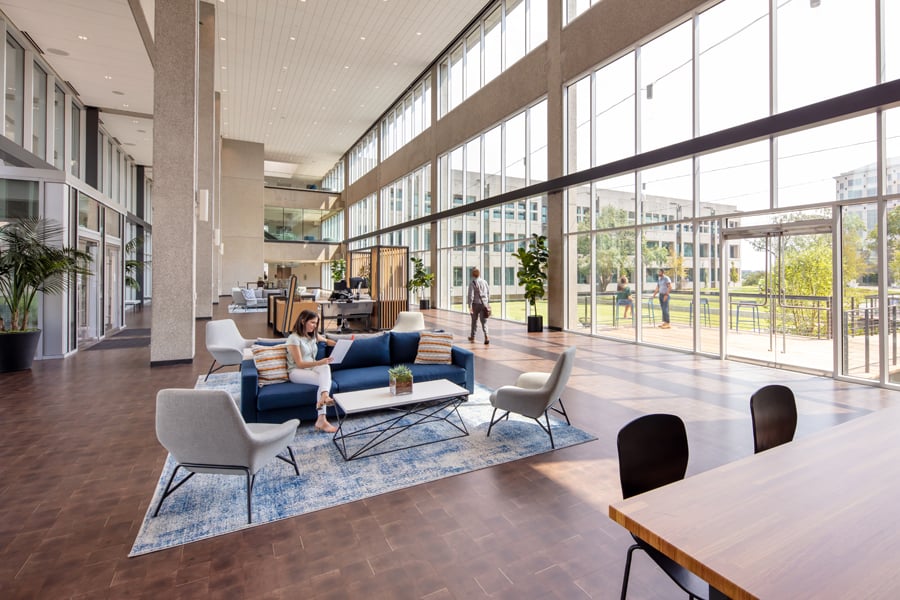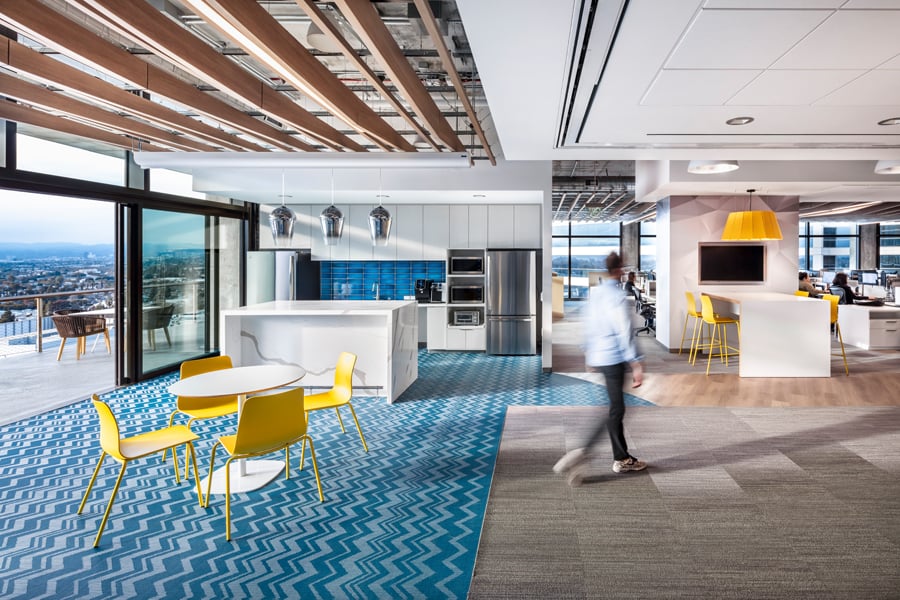
February 16, 2021
The Value of Place is a Powerful Branding Tool
When designing health clinics, shopping malls, and even airports, a seamless brand experience helps bring customers back again and again.

“Do what you do so well that they will want to see it again and bring their friends,” was Walt Disney’s take on brand loyalty. A recent Think Tank panel explored “The Value of Place: Brand and the Human Experience.” Taking a cue from Disney, Steve Dumas, principal at PairD Consulting, said: “The idea is to get the customer to come back— to health clinics, shopping malls, and even airports.”
Joining Dumas on the panel were Paige Terrell, vice president and director of branded environments at Corgan, which hosted the event. Her colleague Sean Kim, vice president and interior design studio leader at Corgan, rounded out the threesome, which was moderated by Avinash Rajagopal, editor in chief of Metropolis.
The panel discussed branding of three disparate environments: a nonprofit health consortium—Kaiser Permanente—as well as shopping centers and airports. Kim stated: “The most important thing for Kaiser is creating memorable experiences. This includes creating a cohesive nationwide brand while allowing regional offices to have their own local identities.” Dumas, whose development and design solutions consultancy collaborated on the Kaiser project, urged branding to the point of consumer quasi-ownership: “We seek to create a product that resonates with customers so they’ll consider it “their medical facility, their mall, or their airport.”
https://player.vimeo.com/video/496924285
As business and personal transactions grow increasingly digital, Terrell said “I need the virtual experience to align with the physical experience.” She offered an example: “The first user experience of the brand is often on a phone, website or virtual tour.” But these must translate into a reason for a compelling in-person visit: “It’s in our nature that there’s always going to be a physical place we want to go to. There have to be sounds, smells, textures—things that excite the senses.”

Dumas turned the conversation to his own specialties. At malls, it’s all about “knowing your customers. ‘Where do they park?’, ‘How do they walk into the mall?’ Even, ‘Where do they go to the bathroom?’” At Los Angeles International Airport, he said, the challenge is “How do we get them to stay longer?”
Rajagopal pushed the panelists to “convert what you believe to be the uniqueness of the brand into something that will connect to customers and bring them back.” Terrell averred that getting customers used to technical support that is available can make the difference: “At a Kaiser clinic, you can make your appointment via an app. You arrive in Parking Garage A and you are tracked along the way, while you are told places for buying coffee or even where you can shop while you’re waiting to see your doctor.”
Dumas summed up the session: “Design matters. If it looks cool, if the customer is excited about it,” it will strengthen your brand, he said.
The Think Tank discussions were held on December 3, 10, and 17. The conversations were presented in partnership with Material Bank, Grohe, Versteel, Knoll Textiles, Etc., Loftwall, and GKD.
You may also enjoy “What Are the Long-Term Impacts of the Remote Work Revolution?”
Would you like to comment on this article? Send your thoughts to: [email protected]
Register here for Metropolis’s Think Tank Thursdays and hear what leading firms across North America are thinking and working on today.







